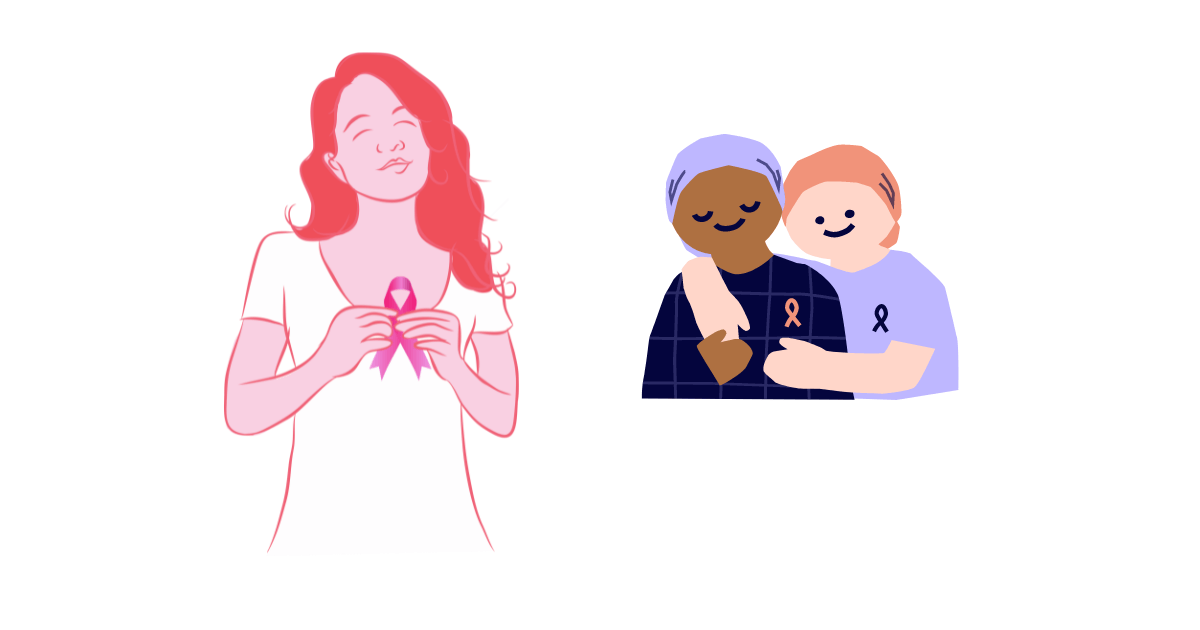The Symptoms of Triple-Negative Breast Cancer? If you’re considered at higher risk for triple-negative breast cancer, it’s crucial to be aware of the potential symptoms associated with this aggressive and less common form of breast cancer.

The Symptoms of Triple-Negative Breast Cancer?
Triple-negative breast cancer (TNBC) comprises around 15%–20% of all breast cancers and stands out due to the absence of receptors for progesterone and estrogen hormones, as well as minimal presence of HER2 proteins, distinguishing it from other breast cancer types.
Symptoms of TNBC mirror those of other breast cancers and may include the following:
– Detection of a new lump or mass within the breast
– Changes in the size, shape, or texture of the breast (e.g., swelling, dimpling, puckering)
– Alterations in skin texture (e.g., “orange peel” texture, rash, bumps)
– Changes in skin color or discoloration
– Nipple discharge not related to breastfeeding
– Changes in the appearance or texture of nipples
– Nipple retraction (inversion)
– Breast pain, warmth, itchiness, or irritation
– Enlarged lymph nodes in the vicinity of the armpit or collarbone
Prompt medical attention is crucial if you notice any sudden changes in your breasts or experience new symptoms. During a healthcare visit, your medical history will be reviewed, and a physical examination, including breast palpation and lymph node assessment, will be conducted. Diagnostic tests such as mammograms, ultrasounds, and biopsies may also be recommended to confirm the diagnosis, assess hormone and protein receptor status, and rule out other conditions. Additionally, genetic testing might be advised, especially in cases with a family history of breast cancer, to evaluate the presence of gene mutations like BRCA.
Understanding its Aggressive Nature and Treatment Options
Compared to other types of breast cancer, triple-negative breast cancer (TNBC) exhibits a more aggressive behavior. This translates to a higher tendency to spread throughout the body (metastasize), making timely diagnosis crucial for better outcomes.
Who Faces a Higher Risk?
While anyone can develop TNBC, specific groups demonstrate an elevated risk.
- Black or Hispanic women: These ethnicities statistically have a higher incidence of TNBC.
- Individuals with BRCA1 mutations or family history: Genetic factors play a role, particularly BRCA1 mutations and a family history of TNBC.
- Younger women (under 40): Age is another contributing factor, with younger women being more susceptible.
Treatment Landscape:
Due to the lack of hormone receptors, which are key targets for hormone therapy and HER2-targeted drugs, TNBC treatment options are more limited compared to other forms of breast cancer. Chemotherapy remains the mainstay of treatment.
Treatment Tailored to Your Case:
The precise treatment regimen depends on various factors, including:
- Tumor location and size
- Disease stage (whether localized or spread)
- Tumor grade and subtype
- Your overall health, age, and preferences
Early-Stage Treatment Options:
- Surgery: Either breast-conserving surgery (lumpectomy) or mastectomy might be recommended, depending on the extent of the tumor.
- Chemotherapy: In some cases, neoadjuvant chemotherapy shrinks the tumor prior to surgery, followed by adjuvant chemotherapy to prevent recurrence.
- Radiation therapy: This may be included depending on the surgery type and tumor characteristics.
- Immunotherapy: Recently, the FDA approved Keytruda for early-stage TNBC when combined with chemotherapy.
Advanced-Stage Treatment Options:
If the cancer has metastasized, additional options become available:
- Antibody-drug conjugates: These combine antibodies with chemotherapy drugs to target specific cancer cells.
- Platinum chemotherapy: Different types of platinum-based chemotherapy may be used.
- Immunotherapy: Other immunotherapy drugs besides Keytruda might be beneficial.
- Targeted therapies: PARP inhibitors can be effective in specific cases.
Crucial Role of Healthcare Professionals:
Ultimately, your healthcare team will collaborate with you to determine the most suitable treatment approach based on your unique circumstances.
Additional Insights:
- Metastasis Targets: TNBC commonly spreads to the brain, bones, liver, and lungs.
- C curability: While significant progress has been made, TNBC is not always curable due to its high recurrence rate.
- Survival Rates: The 5-year overall survival rate for all stages of TNBC is currently around 81%, according to a 2022 study.
Remember:
- Early detection is crucial for better outcomes in TNBC.
- If you experience any suspicious breast changes or a family history of TNBC, consult a healthcare professional promptly.
By understanding the unique characteristics of TNBC and available treatment options, you can make informed decisions alongside your healthcare team and optimize your chances for a successful outcome.
Read more***
Thanks for sharing. I read many of your blog posts, cool, your blog is very good.
Can you be more specific about the content of your article? After reading it, I still have some doubts. Hope you can help me.
Can you be more specific about the content of your article? After reading it, I still have some doubts. Hope you can help me. https://www.binance.com/ar/register?ref=V2H9AFPY
Can you be more specific about the content of your article? After reading it, I still have some doubts. Hope you can help me.
Thanks for sharing. I read many of your blog posts, cool, your blog is very good.
Thank you for your sharing. I am worried that I lack creative ideas. It is your article that makes me full of hope. Thank you. But, I have a question, can you help me? https://accounts.binance.com/ur/register-person?ref=WTOZ531Y
Your point of view caught my eye and was very interesting. Thanks. I have a question for you.
Your point of view caught my eye and was very interesting. Thanks. I have a question for you. https://www.binance.com/el/register?ref=IQY5TET4